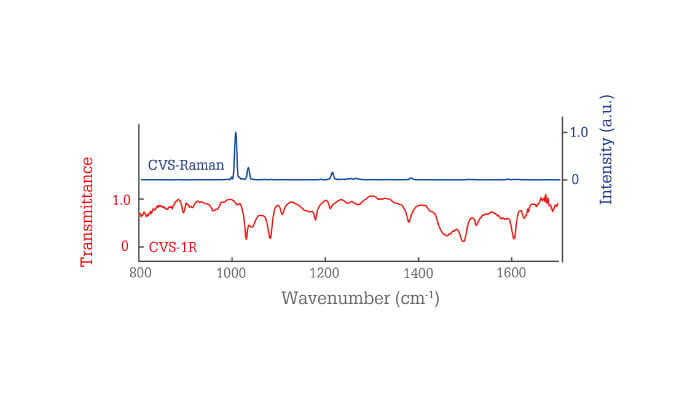Infrared (IR) absorption and Raman scattering spectroscopy (RSS) are two well-known and widely used spectroscopy techniques, yet neither can deduce the full spectral information of vibrational activity within a sample. Recognizing the unmet need, Takuro Ideguchi and colleagues at the University of Tokyo have developed a complementary vibrational spectroscopy (CVS) instrument that combines aspects of IR and RSS, returning richer spectral information than either approach alone (1).
Underpinned by an ultra-short, near-infrared pulsed laser and a Michelson interferometer, the CVS system is inspired by advanced Fourier transform spectroscopy, a staple of the modern-day analytical laboratory. “In truth, our CVS instrument could have been assembled more than a decade ago from existing technologies,” says Ideguchi. “This study was simply the result of following our interest from concept to implementation.”

Preliminary proof-of-concept work has focused on simple organic compounds – toluene (Figure 1), benzene, chloroform, and dimethyl sulfoxide – and the generation of vibrational spectra covering a wavenumber range of 790 to 1800 cm-1. But this is only the first step on a long journey towards real-world application; the dream, according to Ideguchi, has always been to cover an entire vibrational spectrum that spans out over 3000 cm-1. “We’re exploring a number of different options, including deploying a variety of different lasers or nonlinear crystals,” says Ideguchi. “Such approaches would allow us to increase the breadth of our analysis, opening up new avenues for investigation.”
At least one other major challenge remains: improving measurement speed – an essential goal to ensure applicability (and the likelihood of any commercial success). “There are numerous avenues ripe for exploration,” says Ideguchi. “That might include implementing dual-comb spectroscopy into our setup; alternatively, further enhancing our use of rapid-scan Fourier-transform spectroscopy holds plenty of promise.”
And how might a refined version of the tool be applied in the future? “Our approach could see application in biological imaging and chemical analysis,” he says. “Using CVS in this way could provide higher specificity of molecular species, allowing the community to conduct much more precise analysis of biomolecules in cells or tissues.”
References
- K Hashimoto et al., “Complementary vibrational spectroscopy”, Nat Commun, 1, 4411 (2019). DOI: 10.1038/s41467-019-12442-9




